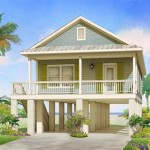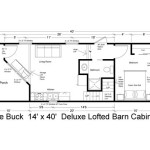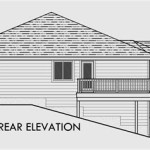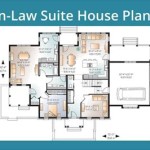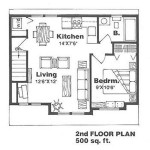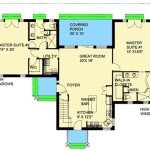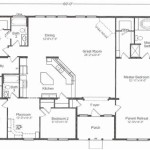House Plans For Metal Buildings: A Comprehensive Guide
Metal buildings, traditionally associated with workshops, storage facilities, and agricultural applications, are increasingly gaining popularity as a viable and attractive option for residential construction. This shift is driven by factors such as cost-effectiveness, durability, and design flexibility. Crafting a habitable space within a metal building, however, requires careful planning and consideration of various factors, beginning with detailed house plans.
House plans for metal buildings differ significantly from those used for conventional stick-built homes. They must account for the unique structural characteristics of metal construction, including load-bearing capabilities, insulation requirements, and integration of essential utilities. This article provides a comprehensive overview of house plans for metal buildings, exploring key considerations, design options, and practical tips for creating a comfortable and functional living space.
Understanding Metal Building Construction
Before delving into specific aspects of house plans, it is essential to understand the fundamental principles of metal building construction. Metal buildings typically consist of a rigid steel frame, comprising columns and rafters, which provides the primary structural support. These frames are usually pre-engineered and prefabricated in a factory, then transported to the building site for assembly.
The exterior walls and roof are commonly clad with metal panels, which can be either single-skin or insulated. Insulated metal panels (IMPs) offer superior thermal performance but are generally more expensive. The type of panel selected significantly impacts the insulation and energy efficiency of the building.
The foundation for a metal building is typically a concrete slab, which must be properly engineered to support the weight of the structure and withstand local soil conditions. The foundation design is a critical component of the overall house plan and should be carefully considered by a qualified structural engineer.
Metal buildings offer several advantages over traditional building methods. They are generally more cost-effective to construct, due to the efficiency of prefabrication and reduced labor costs. They are also more durable and resistant to pests, fire, and extreme weather conditions. Furthermore, the clear-span design of metal buildings allows for greater flexibility in interior layout options.
Key Considerations for House Plans in Metal Buildings
Developing house plans for metal buildings requires a nuanced approach, taking into account several critical factors to ensure a comfortable, functional, and aesthetically pleasing living space. These considerations encompass structural integrity, thermal performance, moisture control, and aesthetic design.
Firstly, the interior layout must be carefully planned to maximize the use of space and ensure efficient traffic flow. The clear-span design of metal buildings offers unparalleled flexibility in interior design, allowing for open floor plans and large, unobstructed spaces. However, it is important to consider the placement of interior walls and partitions to create distinct living areas while maintaining structural stability.
Secondly, proper insulation is crucial for maintaining a comfortable indoor climate in a metal building. Metal is a highly conductive material, meaning it readily transfers heat. Without adequate insulation, a metal building can become unbearably hot in the summer and frigidly cold in the winter. A variety of insulation options are available, including fiberglass batts, spray foam, and rigid foam boards. The chosen insulation method should be selected based on factors such as R-value (thermal resistance), cost, and ease of installation.
Thirdly, moisture control is essential to prevent condensation and corrosion, which can damage the metal structure and lead to mold growth. Proper ventilation is crucial for removing excess moisture from the interior. A vapor barrier should also be installed to prevent moisture from penetrating the insulation. Consider implementing a dehumidification system in climates with high humidity levels.
Fourthly, the placement and design of windows and doors significantly impact the natural light, ventilation, and energy efficiency of the building. Windows should be strategically positioned to maximize sunlight exposure while minimizing heat gain or loss. High-quality, energy-efficient windows are essential for maintaining a comfortable indoor climate. The doors should be appropriately sized and positioned to provide convenient access and egress.
Finally, the aesthetic design of the exterior and interior of the metal building should be carefully considered. While metal buildings are often associated with industrial aesthetics, a wide range of design options are available to create a visually appealing and welcoming home. This includes incorporating traditional siding materials, such as wood or brick, onto the exterior walls, and using decorative trim and finishes to enhance the interior. Landscaping can also play a significant role in softening the industrial appearance of the building and integrating it seamlessly into the surrounding environment.
Essential Elements of a Comprehensive House Plan for Metal Buildings
A comprehensive house plan for a metal building should include detailed information about all aspects of the construction process, from foundation design to interior finishes. This plan serves as a roadmap for the project, ensuring that all parties involved are working towards the same goal and minimizing the risk of costly errors or delays. Several key elements should be included in a thorough house plan:
Foundation Plan: This plan outlines the design and specifications for the foundation, including the type of foundation (e.g., slab-on-grade, pier and beam), dimensions, and reinforcement details. A structural engineer should prepare this plan to ensure that the foundation is capable of supporting the weight of the building and withstanding local soil conditions. The plan must consider load-bearing, frost depth, and drainage.
Floor Plan: The floor plan illustrates the layout of the interior spaces, including the location of walls, doors, windows, rooms, and fixtures. This plan should be drawn to scale and clearly indicate the dimensions of each room. Consider accessibility needs, storage options, and future expansion possibilities when creating the floor plan. The location of plumbing and electrical systems within the walls and floors should also be notated where possible.
Elevation Drawings: Elevation drawings provide a visual representation of the exterior of the building from all sides. These drawings show the placement and design of windows, doors, siding, roofing, and other exterior features. Elevation drawings are essential for visualizing the overall aesthetic appearance of the building and ensuring a cohesive design.
Framing Plan: The framing plan details the structural framework of the metal building, including the location and size of columns, rafters, and other structural members. This plan is typically prepared by a structural engineer and is essential for ensuring the structural integrity of the building. The spacing of frames, wind bracing, and connection details are critical components of this plan.
Mechanical, Electrical, and Plumbing (MEP) Plans: These plans outline the design and layout of the HVAC, electrical, and plumbing systems within the building. The mechanical plan shows the location of HVAC equipment, ductwork, and ventilation. The electrical plan shows the location of electrical outlets, switches, lighting fixtures, and the electrical panel. The plumbing plan shows the location of water supply lines, drain lines, and plumbing fixtures. All of these plans must comply with local building codes and regulations.
Roofing Plan: A roofing plan illustrates the design and construction details of the roof, including the type of roofing material, slope, and drainage system. This plan is essential for ensuring that the roof is properly installed and will effectively protect the building from the elements. Overhangs, flashing details, and ventilation provisions are important elements to consider.
Construction Details: Construction details provide enlarged, detailed drawings of specific building components, such as wall sections, window and door installations, and roofing details. These drawings are essential for ensuring that the building is constructed according to the specifications outlined in the plans. Details regarding insulation installation, vapor barrier placement, and flashing techniques are particularly important for metal buildings.
Specifications: A written document that outlines the materials, methods, and standards used in the construction of the building. Specifications provide detailed information about the quality of materials, the required installation procedures, and the accepted tolerances. The specifications should be clear, concise, and consistent with the drawings.
In conclusion, developing comprehensive and well-thought-out house plans is essential for successfully converting a metal building into a comfortable and functional living space. By carefully considering the unique characteristics of metal building construction and addressing key factors such as insulation, moisture control, and aesthetic design, it is possible to create a durable, energy-efficient, and visually appealing home that meets the specific needs and preferences of the homeowner. Consulting with experienced architects, engineers, and contractors who specialize in metal building construction is highly recommended to ensure that the project is completed safely, efficiently, and to the highest standards.

Steel Home Kit S Low On Metal Houses Green Homes House Plans Kits Building A

Metal House Floor Plans Steel Manufactured Homes Prefab How To Plan

Metal Building Floor Plan Design Designs

Steel Home Kit S Low On Metal Houses Green Homes

Metal Buildings With Living Quarters Floor Plans In 2024

Residential Steel House Plans Manufactured Homes Floor Prefab Metal
Metal Building Floor Plans Free Sample Designs

Metal Buildings With Living Quarters Floor Plans In 2024

Metal House Plans

Custom Prefab Steel Home Floorplans From Sunward

